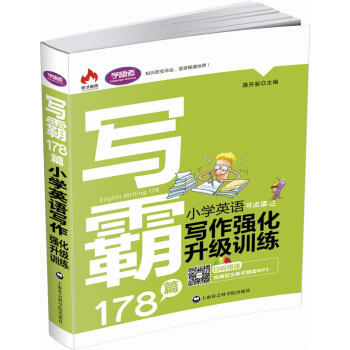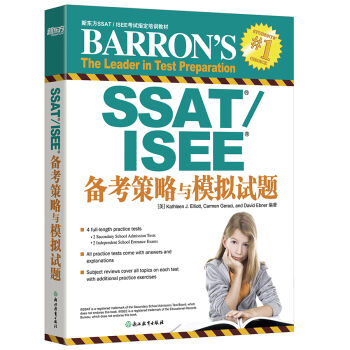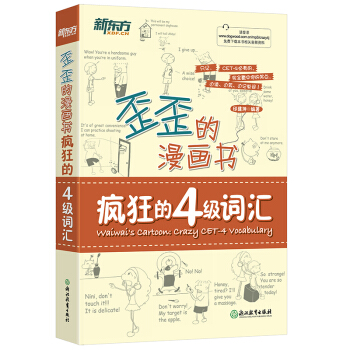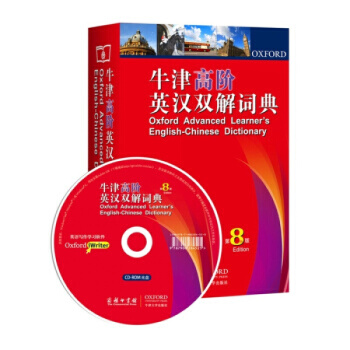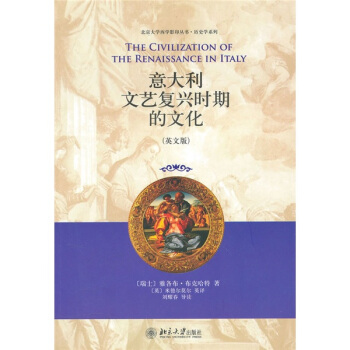

具体描述
内容简介
《意大利文艺复兴时期的文化》是一部文化史研究的经典之作。布克哈特把文艺复兴时期(14—16世纪)的意大利视为一个整体,从政治、社会、文学、道德观念、社交礼仪等多角度阐释这一时期的意大利人所体现的“人文主义”的近代精神。在他看来,这一精神标志着文艺复兴时期成为告别中世纪、步入近代世界的关键环节。这一巨著对后人理解和认识西方文明史产生了深远的影响。目录
导读第一编 作为艺术品的国家
导论
14世纪的僭主政治
15世纪的僭主政治
小僭主
大王朝
僭主政治的反对者
共和国
15世纪的威尼斯
14世纪以来的佛罗伦萨
意大利各国的对外政策
作为艺术品的战争
教皇的统治及其危险
音女利的辱围者
第二编 个体的发展
意大利国与个体
个人的完美化
近代荣誉观
近代的嘲讽与笑话
第三编 古典文化的复活
引言
罗马:废墟之城
古代作家
14世纪的人文主义
大学和学校
人文主义的促进者
古代的再现:书信体和拉丁文演说
拉丁文的演说辞
用拉丁文写作的论文和历史
一般文化的拉丁化
现代拉丁文诗歌
16世纪人文主义者的衰落
第四编 世界的发现与人的发现
意大利人的旅行
意大利的自然科学
自然美的发现
人的发现
诗歌中对精神的描写
传记
有关诸民族和诸城邦的描写
对人外貌的描写
对生活动态的描写
第五编 社交与节庆
社会等级的调和
生活外表的精致化
作为社交基础的语言
较高形式的社交
完美的社交家
妇女的地位
家政
节庆
第六篇 道德与信仰
注释
书目信息
索引
精彩书摘
Oddi were forced to abandon Perugia, and the city became a beleaguered fortress under the absolute despotism of the Baglioni, who used even the cathedral as barracks. Plots and surprises were met with cruel vengeance; in the year 1491, after 130 conspirators, who had forced their way into the city, were killed and hung up at the Palazzo Comunale, thirty-five altars were erected in the square, and for three days mass was performed and processions held, to take away the curse which rested on the spot. A nephew of Innocent VIII was in open day run through in the street. A nephew of Alexander VI, who was sent to smooth matters over, was dismissed with public contempt. All the while the two leaders of the ruling house, Guido and Ridolfo, were holding frequent interviews with Suor Colomba of Rieti, a Dominican nun of saintly reputation and miraculous powers, who under penalty of some great disaster ordered them to make peace-naturally in vain. Nevertheless the chronicle takes the opportunity to point out the devotion and piety of the better men in Perugia during this reign of terror. When in 1494 Charles VIII approached, the Baglioni from Perugia and the exiles encamped in and near Assisi conducted the war with such ferocity, that every house in the valley was levelled to the ground. The fields lay untilled, the peasants were turned into plundering and murdering savages, the fresh-grown bushes were filled with stags and wolves, and the beasts grew fat on the bodies of the slain, on so-called ‘Christian flesh.'When Alexander VI withdrew (1495) into Umbria before Charles VIII, then returning from Naples, it occurred to him, when at Perugia, that he might now rid himself of the Baglioni once for all; he proposed to Guido a festival or tournament, or something else of the same kind, which would bring the whole family together. Guido, however, was of opinion, ‘that the most impressive spectacle of all would be to see the whole military force of Perugia collected in a body,' whereupon the Pope abandoned his project. Soon after, the exiles made another attack, in which nothing but the personal heroism of the Baglioni won them the victory. It was then that Simonetto Baglione, a lad of scarcely eighteen, fought in the square with a handful of followers against hundreds of the enemy: he fell at last with more than twenty wounds, but recovered himself when Astorre Baglione came to his help, and mounting on horseback in gilded armour with a falcon on his helmet, ‘like Mars in bearing and in deeds, plunged into the struggle.'At that time Raphael, a boy of twelve years of age, was at school under Pietro Perugino. The impressions of these days are perhaps immortalized in the small, early pictures of St. Michael and St. George: something of them, it may be, lives eternally in the great painting of St. Michael: and if Astorre Baglione has anywhere found his apotheosis, it is in the figure of the heavenly horseman in the Heliodorus.
The opponents of the Baglioni were partly destroyed, partly scattered in terror, and were henceforth incapable of another enterprise of the kind. After a time a partial reconciliation took place, and some of the exiles were allowed to return. But Perugia became- none the safer or more tranquil: the inward discord of the ruling family broke out in frightful excesses. An opposition was formed against Guido and Ridolfo and their sons Gianpaolo, Simonetto, Astorre, Gismondo, Gentile, Marcantonio and others, by two great-nephews, Grifone and Carlo Barciglia; the latter of the two was also nephew of Varano, Prince of Camerino, and brother-in-law of one of the former exiles, Ieronimo della Penna. In vain did Simonetto, warned by sinister presentiment, entreat his uncle on his knees to allow him to put Penna to death: Guido refused. The plot ripened suddenly on the occasion of the marriage of Astorre with Lavinia Colonna, at Midsummer 1500. The festival began and lasted several days amid gloomy forebodings, whose
deepening effect is admirably described by Matarazzo. Varano fed and encouraged them with devilish ingenuity: he worked upon Grifone by the prospect of undivided authority, and by stories of an imaginary intrigue of his wife Zenobia with Gianpaolo. Finally each conspirator was provided with a victim. (The Baglioni lived all of them in separate houses, mostly on the site of the present castle.) Each received fifteen of the bravos at hand; the remainder were set on the watch. In the night of July 15 the doors were forced, and Guido, Astorre, Simonetto, and Gismondo were murdered; the others succeeded in escaping.
As the corpse of Astorre lay by that of Simonetto in the street, the spectators, ‘and especially the foreign students,' compared him to an ancient Roman, so great and imposing did he seem. In the features of Simonetto could still be traced the audacity and defiance which death itself had not tamed. The victors went round among the friends of the family, and did their best to recommend themselves; they found all in tears and preparing to leave for the country. Meantime the escaped Baglioni collected forces without the city, and on the following day forced their way in, Gianpaolo at their head, and speedily found adherents among others whom Barciglia had been threatening with death. When Grifone fell into their hands near Sant'Ercolano, Gianpaolo handed him over for execution to his followers. Barciglia and Penna fled to Varano, the chief author of the tragedy, at Camerino; and in a moment, almost without loss, Gianpaolo became master of the city.
……
前言/序言
用户评价
这部厚重的著作,光是翻开封面就能感受到一股扑面而来的历史气息,它不仅仅是一本关于艺术史的教科书,更像是一扇通往那个光辉年代的任意门。作者的叙事方式极其引人入胜,仿佛一位学识渊博的向导,带着我们漫步于佛罗伦萨的鹅卵石街道,聆听美第奇家族的密语,感受彼时人文主义思想激荡下的精神图景。我尤其欣赏书中对不同领域思想家之间复杂互动的深度挖掘,比如达芬奇的科学探究如何反哺其艺术创作,以及彼特拉克对古典传统的重新诠释如何为文艺复兴奠定基调。它并没有将文艺复兴仅仅描绘成一场艺术的复兴,而是将其置于更宏大的社会、政治和经济背景之下考察,清晰地展现了城市共和国的商业繁荣如何催生了赞助制度,以及教会权力结构的变化如何为新的世界观腾出空间。阅读过程中,我时常需要停下来,查阅附带的地图和家族谱系图,因为作者巧妙地将人物关系和地域变迁编织进了主线叙事,使得原本复杂的人物网络变得清晰可辨。这本书的价值在于,它提供了一种全景式的理解框架,而不是孤立地赞颂某位大师的杰作。那种对时代精神(Zeitgeist)的精准捕捉,让人在掩卷之后仍能清晰地感受到那个“人”被重新发现的激动人心时刻。
评分我向来对西方史中的“转折点”抱持谨慎态度,总觉得太多论著将文艺复兴描绘成一个突如其来的、与中世纪彻底决裂的“黎明”。然而,这部作品却以一种非常辩证的眼光,着重强调了“连续性”与“断裂性”之间的微妙张力。作者不厌其烦地展示了中世纪晚期的哥特式风格和经院哲学是如何为文艺复兴的思想家们提供了必要的知识工具和艺术母题的。例如,对早期人文主义者如彼特拉克,与其说是对古典的“复兴”,不如说是一种批判性的“继承”和“重构”。书中对建筑领域的研究尤为出色,通过对比佛罗伦萨大教堂穹顶的建造过程,作者展示了技术创新如何与古典建筑原则的“重新学习”交织在一起,这并非是凭空出现的奇迹,而是建立在扎实的传统技艺基础之上的飞跃。阅读全书,我感受到了一种历史的厚重感——那个时代的人们并非一夜之间“觉醒”,而是在审慎地权衡过去、现在和未来,小心翼翼地将古典的遗产融入到他们对人类自身潜能的全新想象之中。这种对历史进程的细致爬梳和耐心铺陈,使得这本书成为了一部真正有分量的学术佳作。
评分我拿到这本英文原版时,首先注意到的是其精良的装帧和丰富的插图质量,这在学术著作中实属难得。然而,真正让我沉浸其中的,是作者在处理复杂哲学概念时所展现出的惊人清晰度。比如,书中对“模仿”(Mimesis)在文艺复兴早期与盛期之间微妙转变的分析,就非常到位。早期,艺术家们试图更忠实地再现自然,而到了盛期,米开朗基罗等人的作品中则开始显现出一种超越自然的理想化倾向,这背后是人文主义对人类潜能的更高期许。作者没有用晦涩的术语来堆砌观点,而是通过对比乔尔乔内和提香在风景处理上的差异,来直观地说明这种哲学上的迁移。此外,书中对于“女性角色”的探讨,也着实令人耳目一新。它没有将文艺复兴时期女性仅仅视为艺术品的描绘对象,而是深入探讨了少数具备教育和赞助能力的女性,如伊莎贝拉·德埃斯特,如何在男性主导的文化圈中,巧妙地运用她们的资源来塑造和推动艺术潮流。这种细致入微的视角,极大地丰富了我对那个时代文化生态的理解,使得这部作品的深度远超一般艺术史书籍的范畴。
评分这本书的学术严谨性毋庸置疑,但它最吸引我这个非专业读者的地方,在于其对“公共性”与“私人性”在文艺复兴时期文化生产中的拉锯战的细致描绘。一方面,教堂和公共广场是展示权力与信仰的宏大舞台,壁画和雕塑承载着集体的道德教化功能;而另一方面,私人宅邸中的小型油画、手抄本诗歌以及精美的室内装饰,则反映了富裕阶层日益增长的个体审美需求和对世俗享乐的追求。作者通过分析美第奇宫廷中私人宴会和公共庆典的组织方式,清晰地揭示了这两股力量是如何相互渗透、相互塑造的。例如,学者们如何将为私人藏书所做的手稿注释,巧妙地转化为对教会教义的间接评论,这种“文本的潜台词”的解读,极具启发性。这本书没有给我们一个简单的结论,而是呈现了一系列复杂的文化选择,迫使读者去思考,在那个技术和思想飞速发展的时代,个体身份的构建是如何在公共赞助和私人品味之间寻求平衡的。它对文化商品化初期的探讨,也让我联想到当代艺术市场的运作,具有跨越时空的洞察力。
评分读完这本书,我的第一反应是,它成功地挑战了许多关于文艺复兴的刻板印象。传统的叙事往往聚焦于罗马和佛罗伦萨的“黄金时代”,似乎其他地区和时间段都黯然失色。但此书的结构巧妙地扩展了我们的视野,它花了大量篇幅来探讨威尼斯画派的色彩革命,以及北方意大利,如费拉拉和曼图亚,在艺术赞助和宫廷文化上的独特贡献。特别是对曼提尼亚作品中那种严谨的透视法和古典主义的偏爱,与佛罗伦萨的早期人文主义思潮之间的相互影响,进行了深入的比较研究。这种地域性的细分,使得整个文艺复兴的面貌不再是扁平化的,而是充满了地域间的张力与对话。更让我印象深刻的是,作者对“失败者”的关注。那些未能获得盛名,却在技术上做出关键性贡献的工匠和学徒,他们的故事被小心翼翼地发掘出来,这使得历史不再只是成功者的颂歌,而是一个充满汗水、竞争和偶然性的复杂过程。阅读时,我常常感到,作者像一位经验丰富的考古学家,层层剥离历史的尘埃,还原出最真实、最生动的文化现场。
评分尽管是影印本,还是非常值得去读的
评分慢慢读,学习写作方法最为重要
评分解读意大利文艺复兴的经典作品(虽然现在有些地方遭到了批判)。但是值得认真阅读。
评分太理论,比较合适专业研究人士,不太适合我这样的业余人士
评分在《余英時訪談錄》中,余先生提及他學習布克哈特此書的經驗,並稱花亦芬譯注本是此書最好的中譯本。按NP的說法,這是余先生把金針渡與人。於是,特意上網自臺灣買了此書來讀,也想學學余先生治史的“金針”。
评分好。
评分讲述文艺复兴历史的名作,还是英文版,读来省却了很多名词的翻译,这样以后读到英文名字也不会反应不过来~赞~
评分美中不足的是,未能附原英文版就精美图版。
评分不错不错不错不错不错不错不错不错不错不错不错不错不错不错不错不错不错不错不错不错不错
相关图书
本站所有内容均为互联网搜索引擎提供的公开搜索信息,本站不存储任何数据与内容,任何内容与数据均与本站无关,如有需要请联系相关搜索引擎包括但不限于百度,google,bing,sogou 等
© 2025 book.tinynews.org All Rights Reserved. 静思书屋 版权所有






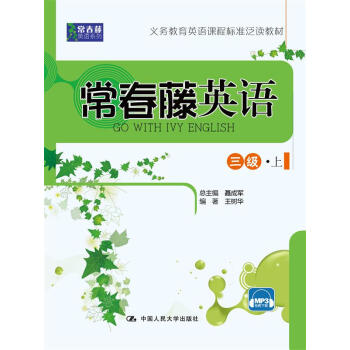
![THE VOICE OF THE CITY: BEST SHORT STORIES OF O. Henry [欧·亨利经典短篇小说] pdf epub mobi 电子书 下载](https://pic.tinynews.org/11643833/54c5d2eaN52ecb5df.jpg)



![英语五千单词百日通(第二版) [Mastering English Vocabulary in One Hundred Days] pdf epub mobi 电子书 下载](https://pic.tinynews.org/11829372/5673c265N25583e59.jpg)


